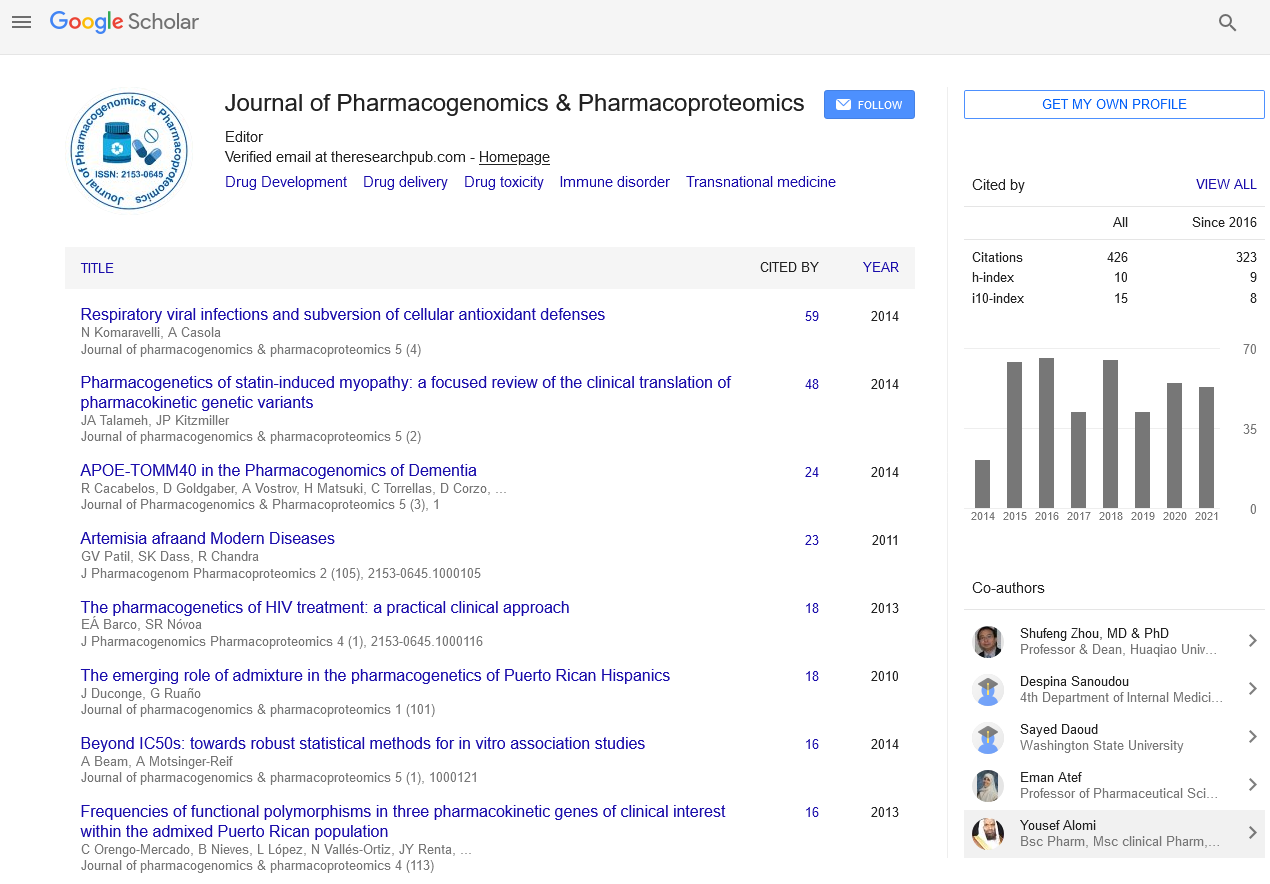Indexed In
- Open J Gate
- Genamics JournalSeek
- Academic Keys
- JournalTOCs
- ResearchBible
- Electronic Journals Library
- RefSeek
- Hamdard University
- EBSCO A-Z
- OCLC- WorldCat
- Proquest Summons
- SWB online catalog
- Virtual Library of Biology (vifabio)
- Publons
- MIAR
- Euro Pub
- Google Scholar
Useful Links
Share This Page
Journal Flyer

Open Access Journals
- Agri and Aquaculture
- Biochemistry
- Bioinformatics & Systems Biology
- Business & Management
- Chemistry
- Clinical Sciences
- Engineering
- Food & Nutrition
- General Science
- Genetics & Molecular Biology
- Immunology & Microbiology
- Medical Sciences
- Neuroscience & Psychology
- Nursing & Health Care
- Pharmaceutical Sciences
Abstract
Verification of DNA isolation methods for NGS-HERC analysis
Vanja RaÅ¡Äanec
Background-aim: Next generation sequencing (NGS) in oncology starts with high quality starting sample material to obtain reliable NGS results and afterwards accurate data analysis. Here we present short verification of manufacturer data of three different methods of DNA isolation from the same sample in which yield of DNA correlates with lymphocyte number. Methods: Whole blood samples were collected in EDTA tubes from patients referred for NGS hereditary cancer panel (HERC) testing on Illumina MiSeq platform. We provided numbers on 30 patients. Lymphocyte number was determined on Sysmex XN-1000 analyzer. DNA was isolated from 200 µL whole blood or buffy coat using Qiagen kit QiaAmp DNA Blood Mini Kit for DNA isolation and also from whole blood on QIAcube. Concentration was mesured on NanoDrop™ Lite Spectrophotometer and Qubit4. Results:, According to the obtained results, we established the protocol of using optimal DNA isolation method for NGS analysis in oncology patients. We compared DNA concentration of three different starting samples and methods. If lymfocyte count is lower then 1,0 x 109/L optimal sample is buffy coat and QiaAmp method. If lymfocyte count is between 1,0 and 2,5x109/L optimal sample is whole blood and QiaAmp method. In cases when lymfocyte count is higher then 2,5x109/L QIAcube isolation can be procced to obtain high quality DNA and minimal 30 ng/µl DNA concentration sufficient for NGS analysis that follows. Conclusion: Considering potentialy low lymfocyte number in oncology patients we developed optimal protocol for DNA isolation using different starting samples and methods to ensure valid DNA sample for NGS analysis.
Published Date: 2021-07-08; Received Date: 2021-06-25


